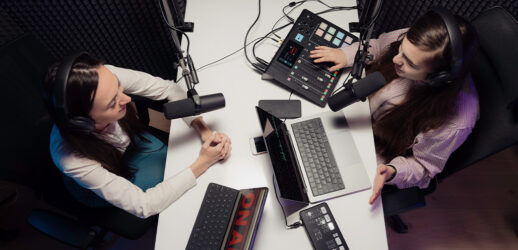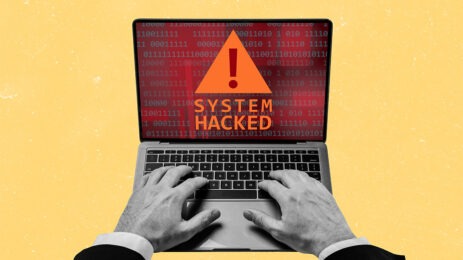Before Pokemon Go became an instant hit, augmented reality (AR) and virtual reality (VR) seemed more like slow-moving science fiction than relevant reality. Skip forward just a year though, and the AR and VR business is booming, especially within the events industry.
The use of VR and AR has penetrated multiple entertainment sectors, from travel to sports, to news. Case in point: During the 2016 NBA finals, the Cleveland Cavaliers gave out cardboard VR headsets (that also doubled as beer carriers) for attendees to experience player intros, a look inside the locker room and a courtside view of the national anthem.
Here is how VR and AR are being used today, and what this means for the future of event planning.
AR and Alcohol: An Unlikely Pair
Taking a creative approach to market two types of 12-year-old whiskey, Scotch brand The Macallan developed an augmented reality app for Apple’s iOS 11. Focusing on a Macallan scotch bottle, the app launches an animation on the making of the whiskeys, starting with the American and European oak trees used to make the casks in which the whiskeys are aged for variations in color and flavor.
The Macallan event adds to the growing number of alcohol marketing efforts that combine bottle labels with AR to evoke an ambiance or tell a story. Back in April, we wrote about the Lobby Bar at One Aldwych in London used VR, along with its Origin cocktail, to teach patrons about the roots of the drink. Audiences are craving new and exciting ways to be entertained and marketed to, and AR and VR have been successful in these efforts.
At a New York City pop-up, visitors could walk through The Macallan AR experience in a gallery setting. Sculptures represented the multiple steps of the whisky-making process, and thus activated narration and animations about each subsequent step involved in the process. This was all visible via Microsoft Hololens glasses, which were handed out upon entry to the event.
In an adjacent room, bartenders served two whiskeys—Sherry Oak and Double Cask—in cocktails and straight. The Macallan Gallery Experience appeared in Miami in October and will travel to Houston and San Francisco on Nov. 8 and 15, respectively.
Why This is Relevant to Planners
In a world where time is our greatest asset, AR and VR promise to change the events industry rapidly, as they completely transform each aspect of event planning, from venue selection to audience participation.
Instead of simply being given a lecture and handed a pamphlet, conference attendees can instead receive a customized and tailored VR or AR experience, which ultimately provides for more comprehensive feedback.
AR and VR are already being used extensively within many different industries and events. On March 3, during a presentation at YPO Edge in Vancouver, British Columbia, Canada, a Guinness World Record was set for the Most People Using Virtual Reality Displays. During his presentation, Ziv Aviram, CEO and co-founder of Mobileye, surprised the 1,867 participants with the experience of driving a driverless car in virtual reality.
Rukkus, a VR ticket vendor, allows customers to see their seat via a VR depiction of the entertainment venue or sports arena before they decide to buy the tickets, ensuring there’s no buyer’s remorse after purchase. Altspace VR allows participants to watch live debates virtually, where attendees are represented as avatars and emojis are used to express reactions (perfect for the less vocal tweeters in attendance).
The New York Times VR allows users to experience stories reported by award-winning journalists via an immersive, 360-degree video experience.
Different Types of VR and AR
An event-friendly use of AR is found in 360 videos. For the viewer, 360-degree video has a much lower barrier to entry than full VR, requiring only a mobile device to experience the virtual world, at least, through its mobile device. This technology is creating a rise in venue exploration; event planners can experience a potential venue without having to travel to it in person, thus saving valuable time and money.
There are already a number of available VR platforms, including Oculus Rift, HTC Vive and PlayStation VR. As far as mobile is concerned, there is Samsung Gear, Google Daydream View and the least expensive device, e Google Cardboard, which is essentially a cardboard box outfitted with viewing lenses that is compatible with newer phones.
With high-definition, 360-degree cameras now available for less than $500, venues can create these immersive videos with financial ease, and post them on YouTube, where anyone with a compatible AR viewer can then watch them. It’s also possible for them to distribute fully branded versions of Google Cardboard with their marketing materials. Considering that Google Cardboard is marketed at $20, the technology is in line with what is often spent on event brochures, so it may be wise for event planners to consider using the technology soon.
What This Means for the Event Industry
Augmented reality provides limitless possibilities for events. It can help get contact information faster than ever before, with a business card that could connect you to an individual’s LinkedIn profile, or add their office number automatically to your contacts with a simple and swift scan with your cellphone.
AR is quickly becoming an event essential. In addition to saving planners time and money, AR and VR provide event attendees with more ways to interact with each other. When you consider that so many successful companies are already utilizing AR and VR for their events, from whiskey tastings to live concerts, it is clear that this technology has created an ever-changing landscape for the meetings and events industry.




